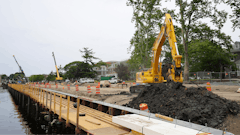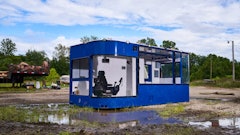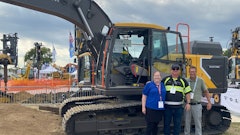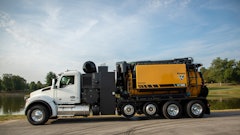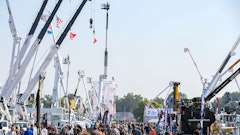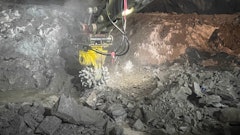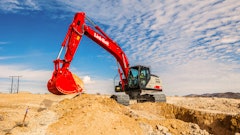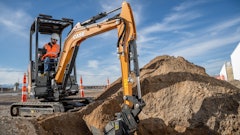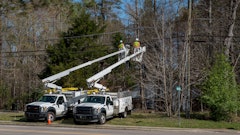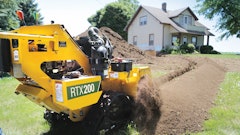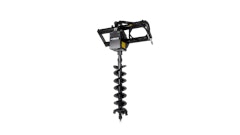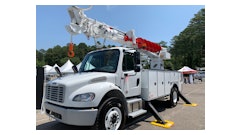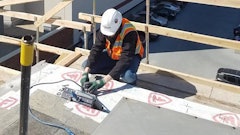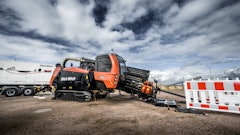“Just take this trench box and try it,” encouraged Tim Ellison of equipment dealer Knickerbocker-Russell in Pittsburgh, PA. “If you decide you want it, then pay for the rental or buy it later.”
When Craig Davey, a sewer contractor and owner of Davey Plumbing in Pittsburgh, agreed to try the trench box, he couldn’t have foreseen the importance of his choice. Twice in that week, the 6-ft.-tall by 8-ft.-long by 4-ft.-wide Corru-Lite aluminum corrugated trench box from Efficiency Production, Inc. (EPI) saved the lives of three Davey Plumbing employees, including Davey himself.
“I’ve been a contractor for 20 years and I take every hole seriously,” Davey says. “We’ve since had countless jobs with cave-ins where the box saved us. I am a true believer in shoring. We depend on it heavily and the bottom line is that without it we couldn’t do our job.”
Proper trench shoring clearly can save lives — failure to use it can cost them. In 2003, OSHA investigated 53 trench-related fatalities; 36 were due to trench collapses, most occurring in trenches that were 5 to 9 ft. deep. This doesn’t include trench-related injuries, which are difficult to track.
With soil weighing in at about 120 lbs. per cubic foot, it doesn’t take much to crush bones, apply sufficient pressure on the chest to cause suffocation, or even bury a worker. Implementing proper trench protection will protect workers from the hazards of a soil collapse or cave-in. It will also protect your business from the potential consequences of a trench-related incident.
“It is mandatory from OSHA, and the fines are so great that if you don’t have it you’re in trouble,” Ellison emphasizes. “You can basically buy some type of shoring for the cost of getting one fine from OSHA.”
The high cost of failure
Failing to provide adequate trench protection can result in severe consequences for your business, especially if a worker is killed. “[The contractor] opens himself up for criminal and civil litigation — lawsuits from the family members or, in cases of negligence, potential jail time, depending on his past OSHA citations and what was going on at the jobsite,” says Dennis Parker, Griswold Machine and Engineering (GME). “He could also be caught without shoring and shielding and face severe fines. I’ve heard of fines as high as $150,000 to $200,000 for just having one or two people in the trench, depending on whether or not he has provided safety training and all that stuff that has to go with it.”
There are other long-term impacts. “Insurance carriers frown on this sort of thing. Your insurance rate might skyrocket or you might not be able to get any insurance at all,” says Ken Forsberg, president of EPI. “Not only that, it doesn’t do much for your reputation.”
Beyond the safety-related aspects, trying to get by with inadequate trench protection can be a waste of time, not to mention money. “Without protecting the trench the right way, [contractors] lose time if they’re trying to slope it back,” says Ron Wey of Pro-Tec Equipment. It can also undercut or undermine nearby structures. “Even though no workers might be injured or there are no workers in harm’s way, they may lose a significant part of the adjacent work site,” he states.
“If the soil was to fall or cave in, they might lose part of the sidewalk, road or curb and that’s going to cost somebody. Normally, the contractor has to bear the brunt of that.”
Making trench safety easier
Over the last decade, it’s become easier to comply with OSHA’s trenching standards. Today, companies that manufacture and sell trench boxes are often very helpful when it comes to providing assistance. Many offer classes in trench safety and competent person training, one-on-one consultations or other programs to help you choose the most efficient route to compliance.
For example, Knickerbocker-Russell, which rents and sells EPI and Speed Shore trench safety products, works directly with contractors in the tri-state Pittsburgh area to help them weed through OSHA standards and laws. There are 13 employees on staff available to go out to a jobsite and assist with trench safety planning. “We find out the project they’re working on and what type of equipment they have, and from there we decide whether the contractor should have an aluminum box, a steel box or a build-a-box,” Ellison explains.
Kundel Industries Inc. provides a program called t.e.d., or Trench Engineered Design. This program employs a team of engineers to help with various pre-job tasks, including soil analysis, utility support engineering, ground containment engineering and equipment production matching. Evaluations include analyzing both the soil and surrounding area to determine what is required.
“With some projects they are not only holding back the soil, but also the surrounding structures — buildings, roads, railroads, etc. This all has an impact on the type of shielding or shoring you’re going to use,” says Ralph Mediati at Kundel. “We have a team of engineers that finds ground containment solutions with engineering design. From there, they can go and have a product built to fit that specific job. That gives the general contractor additional support with regards to the project.”
In addition to educational offerings, the shoring and shielding industry has expanded and become more specialized. More companies are offering a wider variety of shoring and shielding options, and many offer custom-built structures. Prices are also lower, and there are many places you can go to rent equipment.
“A few years ago, there might have been only one method available for shoring a ditch. Now there are four or five different methods,” Wey points out. “So there are more ways that a contractor can be productive and safe at the same time.”
OSHA Trench Safety Basics
When working with any open excavations, including trenches, contractors must follow OSHA’s 29 CFR Part 1926 Subpart P - Excavations. The rules were developed to protect workers from a variety of possible dangers found at an excavation site, including cave-ins. Some of the highlights of Subpart P include:
Consequences of Failure
If you think the consequences of insufficient trench protection are minimal, think again. Following are just a few of the dozens of trench safety violations and proposed fines listed on OSHA’s website so far this year:




